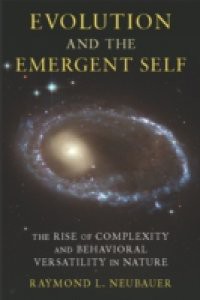Raymond L. Neubauer presents a view of nature that describes rising complexity in life in terms of increasing information content, first in genes and then in brains. The evolution of the nervous system expanded the capacity to store information with relatively open-ended programs, making learning possible. Portraying four species with high brain-to-body ratios&mdashchimpanzees, elephants, ravens, and dolphins&mdashNeubauer shows how each shares with humans the capability for complex communication, social relationships, flexible behavior, tool use, and powers of abstraction. He describes this constellation of qualities as an emergent self, arguing that humanity is not the only self-aware species and that human characteristics are embedded in the evolutionary process and are emerging in a variety of lineages on our planet. Neubauer ultimately shows that human culture is not a unique offshoot of a language-specialized primate, but an extension of a fundamental strategy that organisms have used since the beginning of life on earth to gather information and buffer themselves from environmental fluctuations.Neubauer also views these processes in a cosmic setting, detailing open thermodynamic systems that become more complex as the energy flowing through them increases. Similar processes of increasing complexity can be found in "self-organizing" structures in both living and non-living forms. Recent evidence from astronomy indicates that planet formation may be nearly as frequent as star formation. In February 2011, NASA announced that the Kepler space telescope had located fifty-four planets in the habitable zones around their stars. Life makes use of the elements most commonly seeded into space by burning and exploding stars, and the evolution of life and intelligence that occurred on our planet may be common across the universe.

